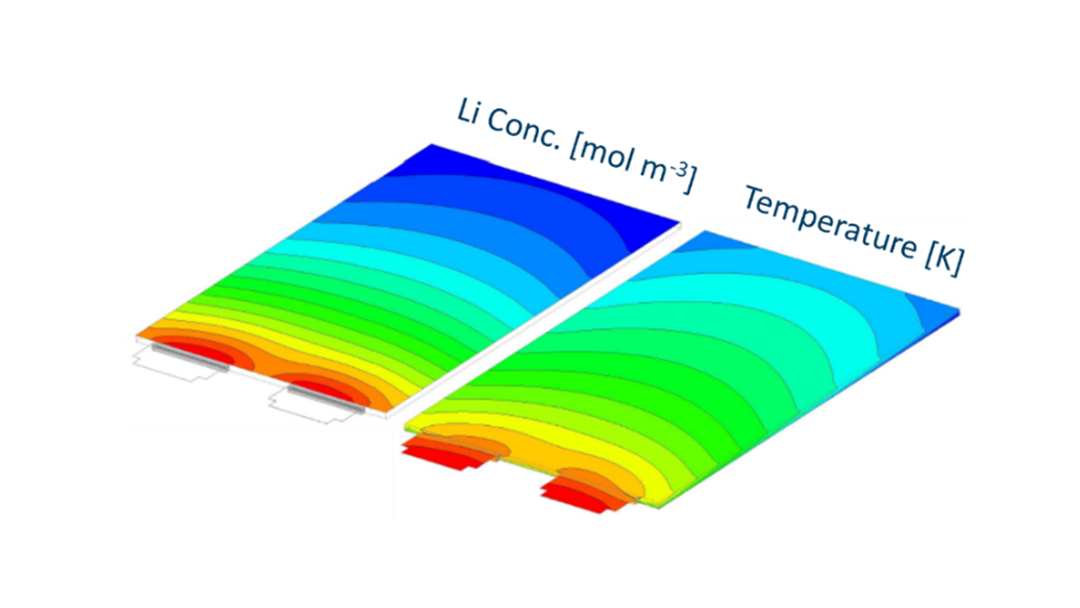The development of electrochemical systems today is progressing at an unprecedented rate. Lithium-ion batteries are pursuing new materials with higher energy and expanding into new application areas. At the same time, hydrogen fuel cells and electrolysers are becoming an ever more important part of mobility and power networks. The development of accurate, powerful, and efficient modelling tools supports the design and system integration of high-performance electrochemical cells.
Multi-scale models simulate many aspects of electrochemical devices, ranging from the atomic scale behaviour of new materials to the cell-level performance and integration into systems like electric vehicles or renewable energy power plants. Building models on a firm foundation of physical and electrochemical theory helps researchers find the links between an experimental observation and the underlying mechanism that drives it. Knowledge can be leveraged to predict how changes to cell design or materials will affect the performance of the device. Advances in affordable high-performance computing has also opened the door to data-driven machine learning methods to predict the lifetime of electrochemical devices in a variety of applications.

At SINTEF, we are developing cutting-edge multiscale modelling tools to support both the scientific development of new energy storage materials and the engineering integration of electrochemical devices in real systems.
- Multi-scale modelling methods at SINTEF:
- Density Functional Theory (DFT)
- Full-Configuration Interaction Quantum Monte-Carlo (FCIQMC)
- Molecular Dynamics (MD)
- Phase Field Theory
- Lattice Boltzmann Method (LBM)
- Finite Volume Method (FVM)
- Finite Element Method (FEM)
- Bond Graph Modelling
- Electrochemical modelling methods at SINTEF
- Equivalent Circuit Model (ECM)
- Single Particle Model (SPM)
- Newman Pseudo-Two-Dimensional (P2D) Model
- 3D Multi-Physics Model
Explore the subject areas: Batteries and Fuel Cells
Projects: BIG-MAP, Hydra, Virtual-FCS, CHANNEL, Camelot, BATMOBILE

